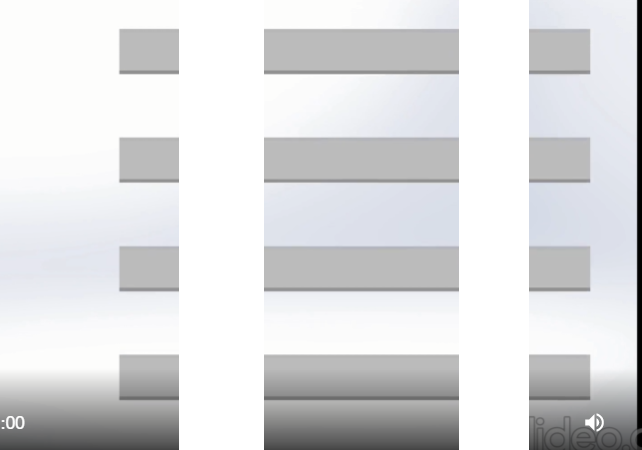# Import all the relavant libraries
import cv2
import numpy as np
# Function for the slider
def nothing(x):
pass
# Setting the resolution for the camera device. (When a video file is used, the cv2.resize function is utillized.)
frameWidth = 640
frameHeight = 480
cap = cv2.VideoCapture("Video_Simple.mp4") # File must be in the same directory
cap.set(3, frameWidth)
cap.set(4, frameHeight)
# Function for displaying multiple screens in one window.
def stackImages(imgArray,scale,lables=[]):
sizeW= imgArray[0][0].shape[1]
sizeH = imgArray[0][0].shape[0]
rows = len(imgArray)
cols = len(imgArray[0])
rowsAvailable = isinstance(imgArray[0], list)
width = imgArray[0][0].shape[1]
height = imgArray[0][0].shape[0]
if rowsAvailable:
for x in range ( 0, rows):
for y in range(0, cols):
imgArray[x][y] = cv2.resize(imgArray[x][y], (sizeW, sizeH), None, scale, scale)
if len(imgArray[x][y].shape) == 2: imgArray[x][y]= cv2.cvtColor( imgArray[x][y], cv2.COLOR_GRAY2BGR)
imageBlank = np.zeros((height, width, 3), np.uint8)
hor = [imageBlank]*rows
hor_con = [imageBlank]*rows
for x in range(0, rows):
hor[x] = np.hstack(imgArray[x])
hor_con[x] = np.concatenate(imgArray[x])
ver = np.vstack(hor)
ver_con = np.concatenate(hor)
else:
for x in range(0, rows):
imgArray[x] = cv2.resize(imgArray[x], (sizeW, sizeH), None, scale, scale)
if len(imgArray[x].shape) == 2: imgArray[x] = cv2.cvtColor(imgArray[x], cv2.COLOR_GRAY2BGR)
hor= np.hstack(imgArray)
hor_con= np.concatenate(imgArray)
ver = hor
if len(lables) != 0:
eachImgWidth= int(ver.shape[1] / cols)
eachImgHeight = int(ver.shape[0] / rows)
print(eachImgHeight)
for d in range(0, rows):
for c in range (0,cols):
cv2.rectangle(ver,(c*eachImgWidth,eachImgHeight*d),(c*eachImgWidth+len(lables[d][c])*13+27,30+eachImgHeight*d),(255,255,255),cv2.FILLED)
cv2.putText(ver,lables[d][c],(eachImgWidth*c+10,eachImgHeight*d+20),cv2.FONT_HERSHEY_DUPLEX,0.7,(255,0,255),2)
return ver
def getContours(img,imgContour):
contours, hierarchy = cv2.findContours(img, cv2.RETR_EXTERNAL, cv2.CHAIN_APPROX_NONE)
for cnt in contours:
area = cv2.contourArea(cnt)
areaMin = cv2.getTrackbarPos("Area", "Sliders")
if area > areaMin:
cv2.drawContours(imgContour, cnt, -1, (255, 0, 255), 3)
peri = cv2.arcLength(cnt, True)
approx = cv2.approxPolyDP(cnt, 0.02 * peri, True)
print(len(approx))
if approx.any() < 4:
x , y , w, h = cv2.boundingRect(approx)
cv2.rectangle(imgContour, (x , y ), (x + w , y + h ), (0, 0, 255), 5)
cv2.putText(imgContour, "Points: " + str(len(approx)), (x + w + 20, y + 20), cv2.FONT_HERSHEY_DUPLEX, .5,
(0, 255, 0), 1)
cv2.putText(imgContour, "Area: " + str(int(area)), (x + w + 20, y + 45), cv2.FONT_HERSHEY_DUPLEX, 0.5,
(0, 255, 0), 1)
# Create sliders for adjustment
cv2.namedWindow('Sliders')
# Setting windowsize for the Sliders
cv2.resizeWindow('Sliders', 840, 240)
# Creating the sliders itself
cv2.createTrackbar('Blur', 'Sliders', 0, 100, nothing)
cv2.createTrackbar('Max','Sliders',255,255,nothing)
cv2.createTrackbar('Min','Sliders',87,255,nothing)
cv2.createTrackbar('Area', 'Sliders', 1947, 10000, nothing)
cv2.createTrackbar('Min Threshold', 'Sliders', 153, 255, nothing)
cv2.createTrackbar('Max Threshold', 'Sliders', 255, 255, nothing)
#cv2.createTrackbar('Maximum','Max',0,255,100)
# While loop for the main program when the video is playing.
while (cap.isOpened()):
success, img0 = cap.read()
img = cv2.resize(img0, (640, 480))
#img = cv2.bitwise_not(img01)
imgContour = img.copy()
A = cv2.getTrackbarPos('Min','Sliders') #Creating variables for the value's of the sliders. (Must be in while loop to reassess value)
B = cv2.getTrackbarPos('Max','Sliders')
C = cv2.getTrackbarPos('Blur','Sliders')
D = cv2.getTrackbarPos('Min Threshold', 'Sliders')
E = cv2.getTrackbarPos('Max Threshold', 'Sliders')
imgGray = cv2.cvtColor(img,cv2.COLOR_BGR2GRAY) # Turns picture gray
#retval, imgGray1 = cv2.threshold(imgGray,D,E,cv2.THRESH_BINARY+cv2.THRESH_OTSU)
#imgBlur = cv2.GaussianBlur(img,(3,3),C) # Adds blurr to picture
imgBl = cv2.Canny(imgGray,A,B) # Transforms picture to black and white outline
imgBlDil = cv2.dilate(imgBl, (27,27), iterations = 7 )
getContours(imgBlDil,imgContour)
StackedImages = stackImages(([img,imgGray],
[imgBlDil,imgContour]),(0.1))
if success:
cv2.imshow("Staked Images", StackedImages)
else:
print('Video ended')
cv2.destroyAllWindows()
break
# When the q key is pressed, the progam stops and the window closes.
if cv2.waitKey(1) & 0xFF == ord('q'):
cv2.destroyAllWindows()
break
Zo moet je code copy pasten:
```
Code
```
Code
